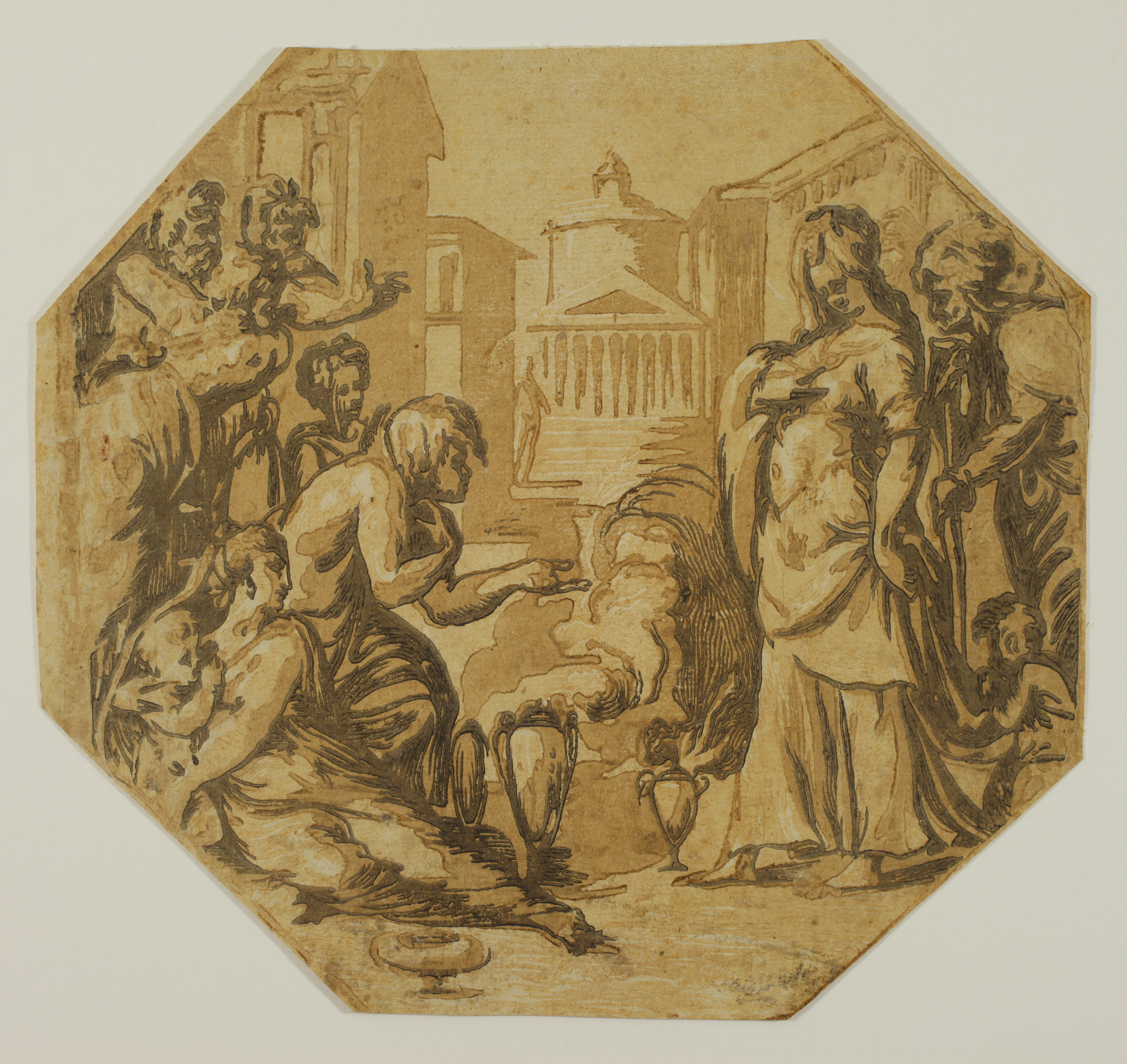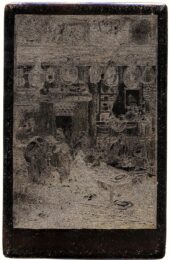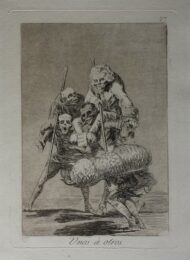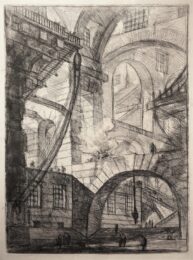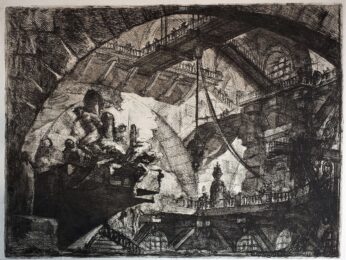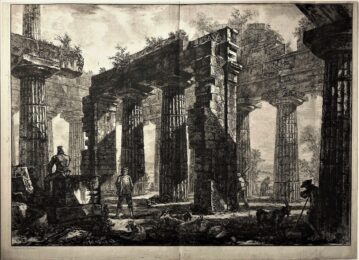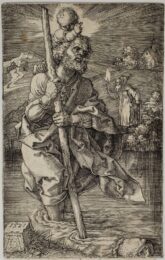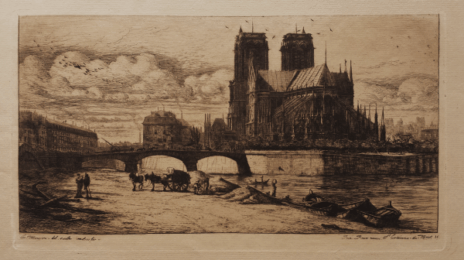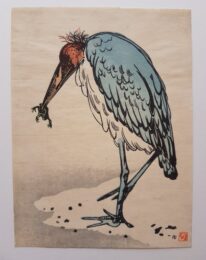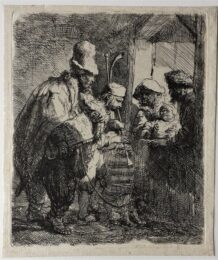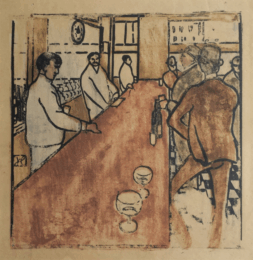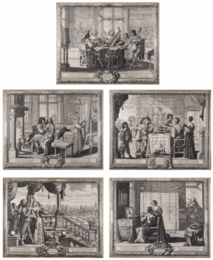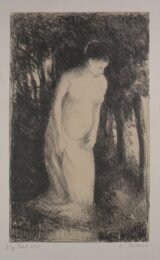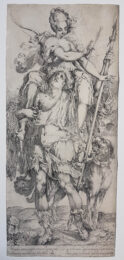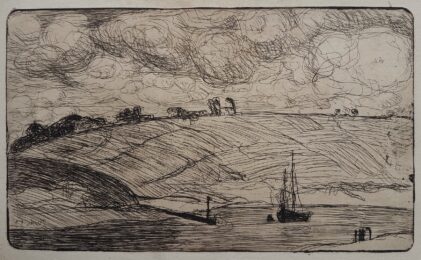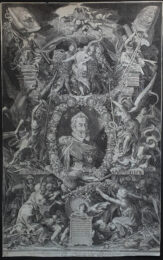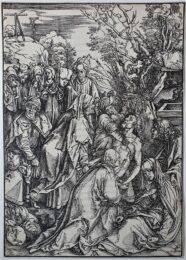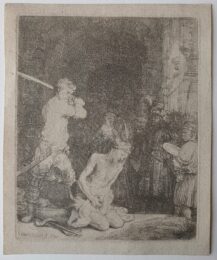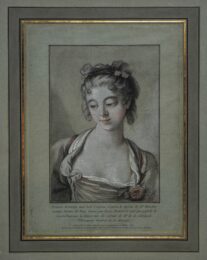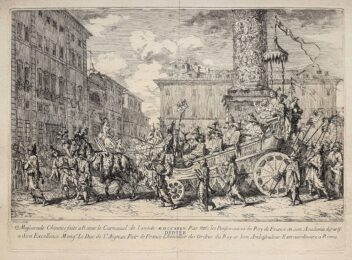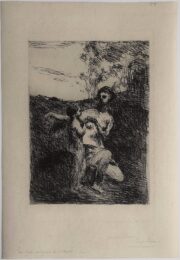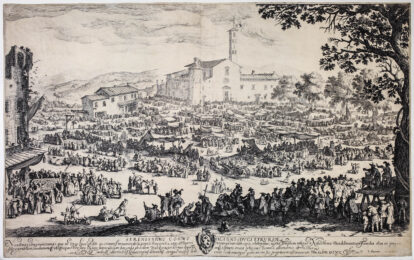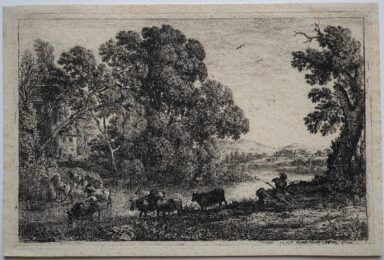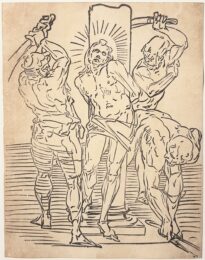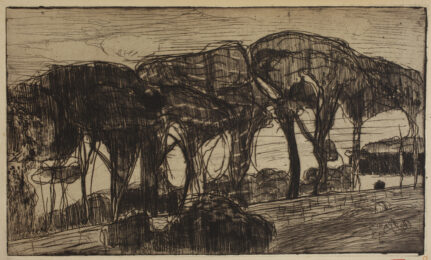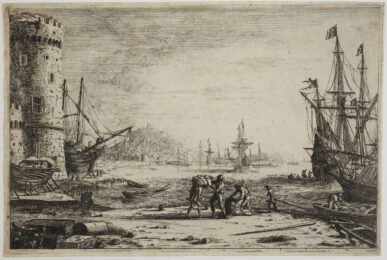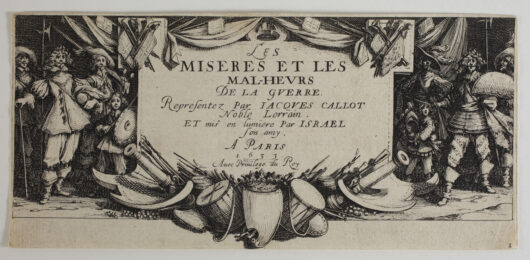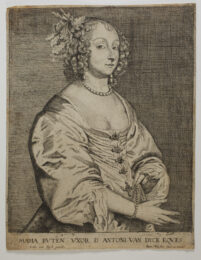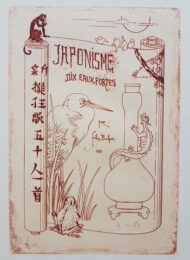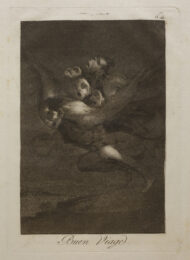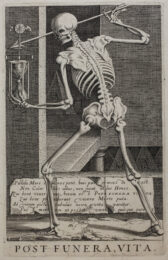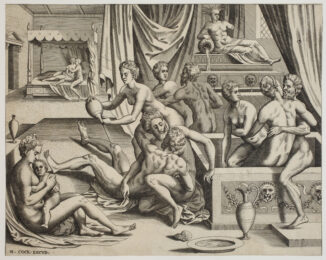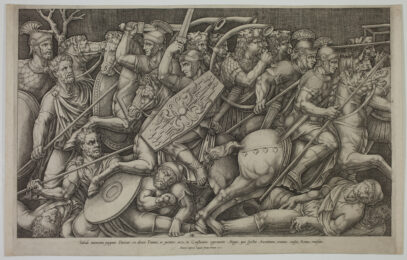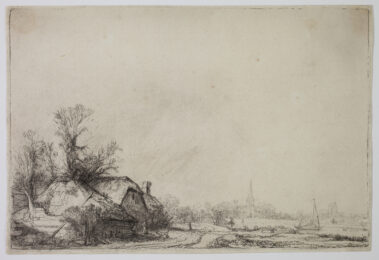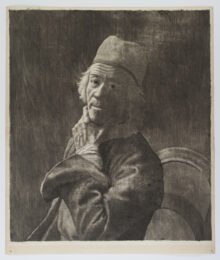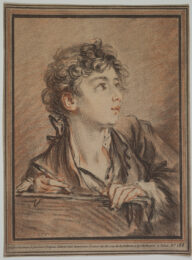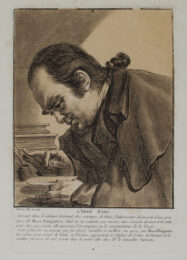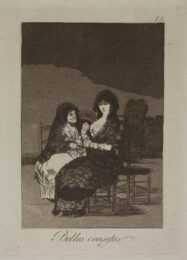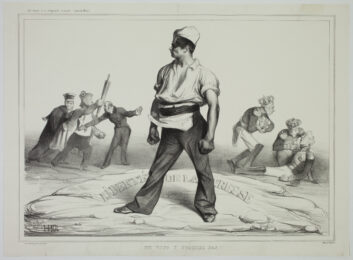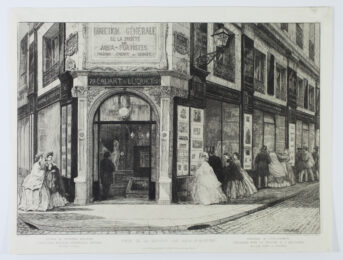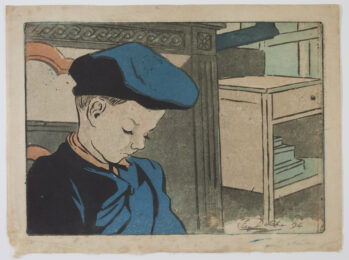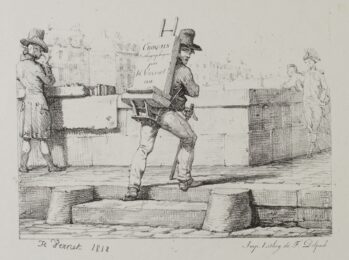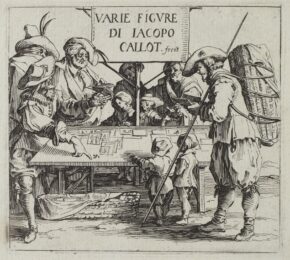Details — Click to read
Woodcut in chiaroscuro, printed from three blocks in olive, light brown and dark brown, 247 x 229 mm. Bartsch vol. XII, section VII, no. 26; Takahatake, cat. 62-63.
Impression of the first or second state, trimmed to the octagon, without the margins where the monogram of Andrea Andreani and the inscription in mantoua 1602 appear in the 2nd state. These margins have often been trimmed. Naoko Takahatake and Linda Stiber Morenus tell us that Andrea Andreani reprinted Vicentino’s print, first without adding his mark, then with it.
Whether our print is from the 1st or 2nd state, it has all the characteristics of the impressions printed by Andreani:
‘The blocks show losses and are riddled with insect damage, most significantly in the lightest tone. To compensate, Andreani deployed exceptionally liquid inks that, though thinly applied, flowed into the lacunae of the blocks. The extreme channelled squash of these wash-like inks and deep embossment of the sheet reveal the impression was printed on very moist paper with heavy pressure and probably soft packing in the tympan.‘ (Naoko Takahatake and Linda Stiber Morenus, p. 163) Andrea Andreani’s technique makes it possible to obtain beautiful impressions from blocks that have begun to wear. Our impression is particularly well printed if we compare it with other impressions of a similar edition but on which the lighter ink has not spread evenly (see, for example, the impression in the Library of Congress or one of the impression in the Rijksmuseum.
Very fine impression printed on laid paper, trimmed as is very often the case to the octagon, the edge of the octagon being visible on only 6 of the 8 sides, and very slightly trimmed in the image on the upper edge. In very good condition. Very slight soiling to lower right.
Adam Bartsch describes this print as engraved by Antonio da TRENTO (active c. 1527 – c. 1540). However, it is attributed on the basis of stylistic criteria to Niccolò Vicentino by Naoko Takahatake (‘Niccolò Vicentino’s “Miraculous Draught of Fishes”’, in Print Quarterly, September 2011, vol. 28, no. 3, p. 258, note 9). She recalls that Pierre Jean Mariette had already given it to Vicentino (Mariette, Notes manuscrites, vol. 2, fol. 86).
The composition is by Francesco Salviati (1510 – 1563). « Shortly after his arrival in Venice in the summer of 1539, Francesco Salviati (1510–1563) was at work on Honors Rendered to Psyche, an octagonal painting commissioned to adorn a ceiling in Giovanni Grimani’s palazzo at Santa Maria Formosa. The palazzo housed an important collection of antiquities and was decorated with ancient themes, including the present subject from Apuleius’s Metamorphoses depicting the beautiful princess Psyche admired by her citizens » (Naoko Takahatake and Linda Stiber Morenus, p. 161)

